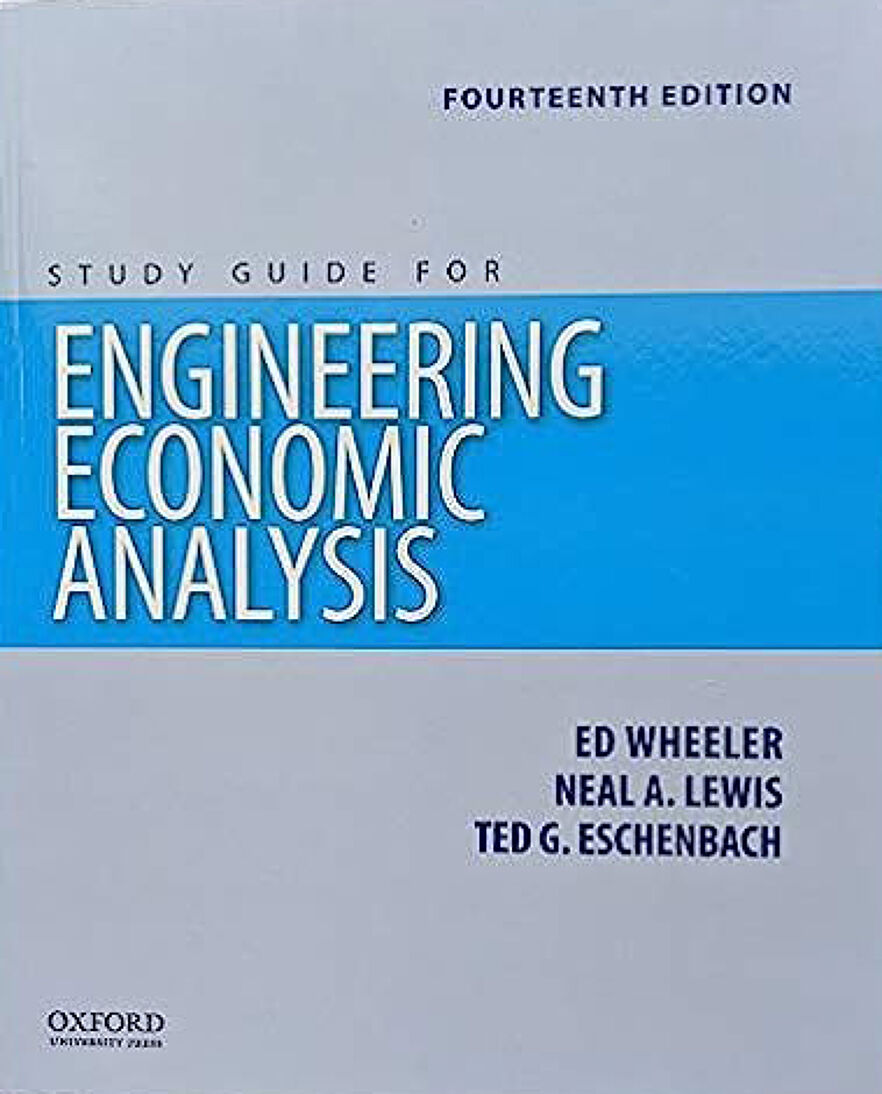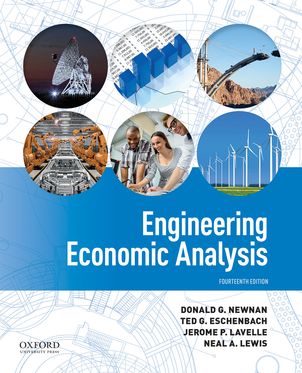Engineering Economic Analysis Study Guide

Engineering Economic Analysis Study Guide
|
ISBN: |
9780190932008 |
|
Binding: |
Paperback |
|
Published: |
6 Jun 2019 |
|
Availability: |
|
|
Series: |
$69.95 AUD
$78.99 NZD
Request an inspection copyDescription
With its logical organization and extensive ancillary package, Engineering Economic Analysis is widely regarded as a highly effective tool for teaching and learning. The fourteenth edition includes crucial updates to cover new US tax laws and software that will algorithmically generate and automatically grade homework problems.
Contents
Authors
Donald Newnan
Ted Eschenbach
Jerome Lavelle
Neal Lewis
Donald Newnan is an Emeritus Professor at San Jose State University. Ted Eschenbach is a consultant and Professor Emeritus of Engineering Management at the University of Alaska Anchorage. Jerome Lavelle is Assistant Dean in the College of Engineering and Associate Professor of Industrial Engineering at North Carolina State University. Neal A. Lewis worked as an engineer for Proctor and Gamble and Bayer for more than twenty-five years before turning his attention to teaching. He was an Associate Professor at Marshall University and the University of Bridgeport for twelve years. He is currently an instructor at the University of New Haven and Fairfield University.
Reviews
[Newnan's] introduction to the use of spreadsheet is essential and useful. I equally value the students' ability to use the mathematical functions and compound interest table to make calculations. I believe the text provides mechanisms to train in all of these. The current format is excellent, compact and concise ... and I enjoy teaching with it. - Andy Hong, University of Utah
I really like using [the free, online Cases in Engineering Economy] to give students a real world example on how to use engineering economics. It provides good studies that the students can use and go into as much depth as I deem necessary. I use the case studies as mini projects for the students. I can determine fairly quickly whether they understand the concepts and how to correctly apply them using the case studies. - David W. Naylor, UNCCharlotte
I've used this text both as a student in the 70's and as an instructor in the 2010's. I love the book ... logically laid out with great problems and examples. - Mark Calabrese, University of Central Florida
This text is perfect for our students. The end of chapter problems are one of the strengths of the text. There are enough problems at the proper level and cover the material presented. The solutions are correct and very helpful. - Nicholas Sylvester, University of South Alabama
Once I took time to read it through I realized it is much better written than my current text. - Scott Flemming, Dalhousie University
